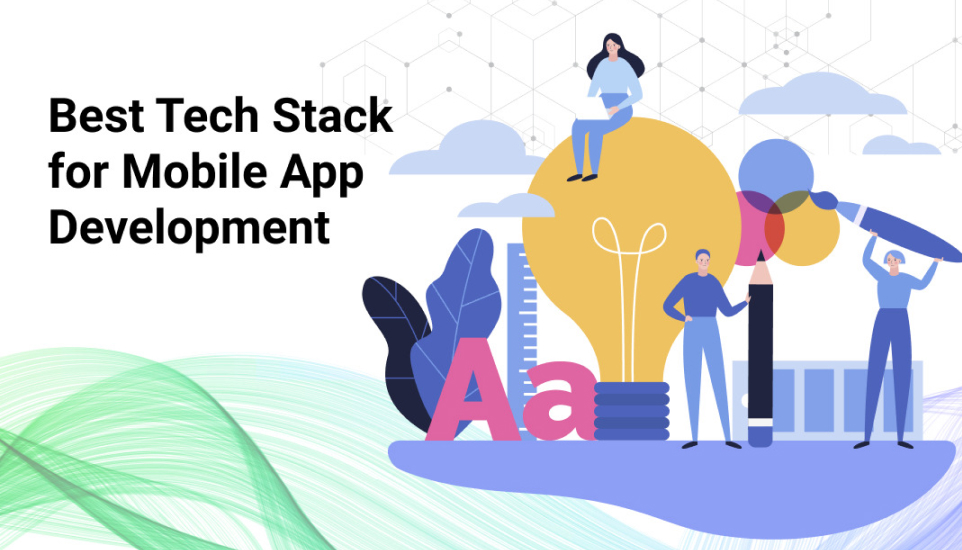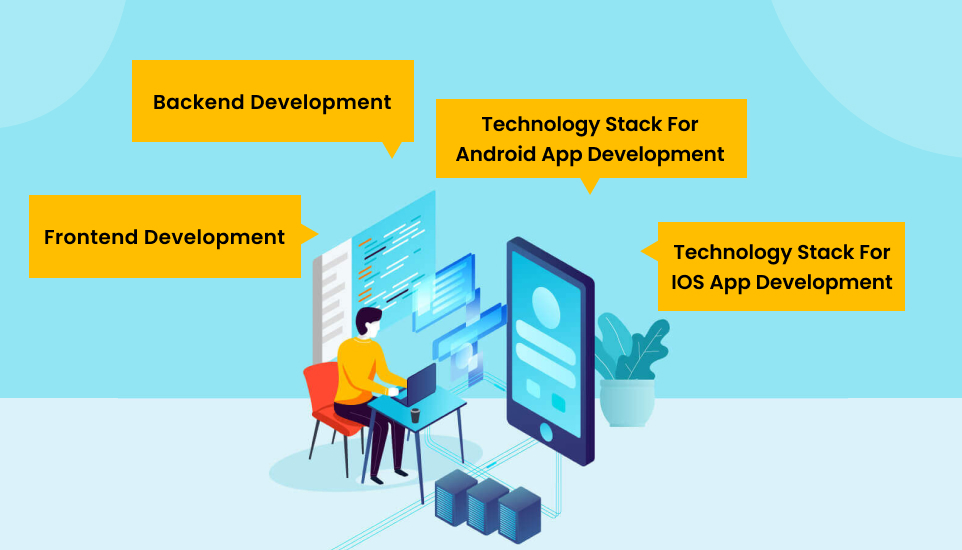
To make your mobile app development project successful and promising, choosing the best mobile technology stack is important. Technology not only provides your project life but also makes it scalable, maintainable, and committed to your functional specifications. An appropriate mobile stack may result in less time and lower costs for mobile application development.
We review the popular mobile application development strategies and the advanced technology stacks that you can use to implement further. There are all kinds of web and mobile apps around us, when it comes to choosing the right technology for creating a mobile app development, it becomes the most confusing, and necessary task. Because just designing and developing the mobile app as best as possible and developing a perfectly functional app is not sufficient.
Selecting the right technology platform for mobile app development is also crucial. If you are considering launching your own mobile app-based start-up and are not skilled in technology, you should be more involved in making a tech stack decision. If you select the wrong technology stack, your application dream can break completely in a matter of months. Thankfully, there are a few crucial aspects that can help you choose the right tech stack as per your mobile application development project requirement.
Technology Stack From A Mobile App Development – What Is It?
A technology stack forms a crucial part of creating any app whether it is for the web or for the mobile platform. The term is often used to refer to a combination of tools, programming languages, and software behind a project. The tech stack for your mobile app development is made up of languages, frameworks, and software products that are the foundation of the final product.

Frontend Development
Frontend development is the interface of the mobile application used by the app users to interact and navigate through the app. There are multiple platforms and tools available to develop the front end of the mobile app. The information on which tools work best for a particular task and mark the difference between developing a site that will be affected or get hacked and a site that is designed well and is scalable.
Tools used for frontend Development include:
- HyperText Markup Language – HTML
- JavaScript
- Cascading Style Sheets (CSS)
- WebAssembly
- For A front-end developer the two points should be taken in consideration while developing any project – performance and accessibility
Backend Development
Backend development is a crucial part of mobile app development that is responsible for security, data storage, and business logic. The backend of a mobile application is actually like a server for mobile applications because it stores and orders all the important information that the end-users are unable to see. The basic backend development tools needed for mobile apps include – language and frameworks, web servers, microservice platforms, database management systems, collaboration services, and website performance testers.
Tools used for Backend Development include:
- AWS
- Microsoft Azure
- PHP
- Python
- Golang
- Ruby
- JavaScript
- Node.Js
Technology Stack For Android App Development
While doing native mobile app development, if you choose to go with Android app development, then you should use the following technologies in your tech stack. Two of the best programming languages for android app development include Java and Kotlin. Java has established itself as a programming language with immense open-source tools and libraries that support mobile app developers. Java has some restrictions that control Android API design. Kotlin was designed particularly for android app development to overcome these shortcomings and is naturally lightweight, and a lot less involved while offering solutions to needs in android app development design.
Technology Stack For iOS App Development
If you ever wanted a native iOS app development, you have to look at a different set of technology tools or stack. The two most preferred languages for iOS app development today are Swift and Objective-C. On its own Objective-C is essentially a superset of the popular programming language C, and offers object-oriented abilities and a dynamic runtime environment. Once you have done work with Swift for creating your own native iOS app development, you would need to work with Apple XCode. In all, XCode is quite resourceful for iOS app development building engaging user interfaces using debugging tools and integrated documentation.
Conclusion
There are a number of factors in mobile application development that depend on your choice of the technology stack. The technology stack you prefer for your mobile app decides whether the mobile app would be robust or not and define future scalability. Choosing the wrong technology stack would not only affect the current performance of your application but also restrict any future possibilities of growth.
Which technology stack have you been applying for your mobile app development? Let us know in the comments section!